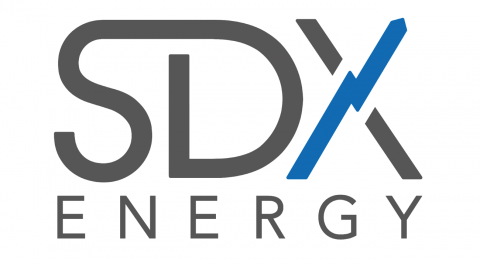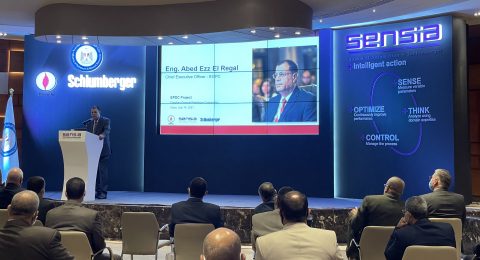Energy Consumption Crisis in Egypt
Egypt lacks an energy conservation culture. Yet, the demand for energy continues to grow with increasing industrialization and a skyrocketing population. Egypt is not alone in facing this problem, as many other oil-producing countries in the Middle East are plagued with increasing domestic demand for energy.
The heavy subsidization of energy products in Egypt is forcing the oil producing countries of the Middle East to pay billions of dollars to keep prices low. Subsidies, in theory, can help some countries protect the poor and can aid in the overall industrialization process. However, subsidies have led to a lack of conservation culture and wasteful spending in Egypt. According to the Arab Union of Electricity, the price of residential electricity in (US cents/ kwh in 2010) was less than two cents in Egypt, but around 11 cents in the United States. Low prices have made companies and households alike less concerned about their monthly electricity bills, which leads to wasteful spending.
While energy subsidy policies need to be re-evaluated, all aspects of demand-side management should be a priority. The lack of education about wasteful consumption or energy efficiency is one of the biggest factors hindering Egypt’s economy today, and is crucial for Egypt to increase its energy efficiency to attain the economic and environmental benefits for consumers, industry, and the government alike.
According to Ahram online, in the last two years, national electricity consumption in Egypt has increased by more than 10% whereby total daily electricity production in Egypt stands at about 27,000 megawatts, while in summertime consumption stands at about 29,500 megawatts per day. It is evident that awareness of energy efficiency must be increased to avoid such massive disparities between production and consumption, which has resulted in paralyzing power cuts in the past.
According to the Arab Forum for Environment and Development’s (AFED) Energy Efficiency Handbook (EEH), buildings in Arab countries account for 35-45% of all CO2 emissions and account for around 35% of all final energy consumption. However, studies have shown that efficiency renovations can save commercial buildings around 30% of their energy usage. Unfortunately, there are barriers towards efficiency upgrades. The biggest hurdle is the upfront capital cost of efficiency upgrades. While a major efficiency overhaul could save a company a substantial amount of money, they may not see those savings for a couple of years. Again, lack of knowledge about energy saving measures and ways to increase energy efficiency is a major factor.
Current Efforts to Improve Energy Efficiency In Egypt:
Non-governmental agencies (NGOs), private investors, and government agencies have collaborated on programs that are designed to improve energy efficiency in Egypt. Current efforts include an awareness campaign launched by the Egyptian German Joint Committee on Renewable Energy, Energy Efficiency, and Environmental Protection (JCEE) organization, in partnership with Procter & Gamble. Additional programs targeting industries have also been developed, including a pilot project by the USAID, Egyptian Industrial Development Agency, the Egyptian National Cleaner Production Center, and the World Environment Center, which targets food-processing enterprises. The project assists companies in conservation through investments in energy-efficient equipment, as well offering strategies to reduce energy leakage.
Easy and Cost-Effective Ways to Save Energy:
Lighting
In the Arab world, lighting represents 15-25% of the total energy consumed by large office buildings. Not only are most lighting systems inefficient, but they also emit a large amount of waste heat that adds to the building’s cooling load. Light bulbs today are still surprisingly inefficient; incandescent lamps only convert 6% of drawn electricity into useful light, whereas compact fluorescent lamps (CFLs) come in at 24%, and light-emitting diodes (LED) rank at a 27-45%.
-
Artificial Light: Switching off lights in unoccupied rooms and during the night can increase energy efficiency by up to 20%.
-
Natural Light: Offices can also make better use of natural light via windows and doors when possible, which can help save up to 30% of lighting electricity consumption when used effectively.
-
Ensure regular lighting maintenance: This is especially important in Cairo where pollution and dust buildup on lights and walls can decrease illumination by 20%.
-
Light Bulbs: Replace older incandescent light bulbs with more efficient CFL bulbs. Not only are these bulbs more energy efficient, but they also give off less heat waste, thus reducing cooling costs as well.
Office Equipment
Surprisingly, office equipment (i.e. computers, copiers, monitors) accounts for, on average, 18% of total energy use for offices. Non-energy saving PCs, consume about 520 KWh/yr while Energy Star models can save up to 83% more energy per year. A standard non-Energy Star copier (21-40 ppm) uses 660 KWh/yr, but if energy saving mode is used or if the copier is upgraded to an Energy Star model, the copier has the potential to save up to 55% more energy. Energy Star equipment is often no more expensive than less efficient products.
-
Shut down computer monitors, copy machines, and other equipment that are left on over night.
-
Be aware and take advantage if your office equipment has energy-saving settings.
-
Upgrade office equipment to more efficient models with an energy certification, like Energy Star. Energy Star was developed by the United States Environmental Protection Agency to reduce energy consumption and air pollution by manufacturing products designing buildings that meet the highest energy efficiency standards.
HVAC (Heating, Ventilation and Air-Conditioning)
Heating, ventilation and air-conditioning systems are responsible for the biggest percentage of an office’s energy consumption, yet they have the potential to bring the energy savings if used effectively. HVAC consumption varies geographically due to climate differences, and AC levels are highest in the Middle East for longer periods throughout the year. According to the EEH, HVAC systems account for on average 51% of a building’s energy consumption in the US, 52% in Spain, 58% in the United Kingdom, 70% in Saudi Arabia, and 71% in Bahrain.
The Egyptian government’s Organization for Energy Planning (OEP) has developed efficiency standards for air conditioners—along with other common residential appliances—that must be met by manufacturers and importers to attain efficiency labels for the appliances. As reported recently by Ahram online, the Egyptian Ministry of Industry and Foreign Trade, in an effort to promote energy conservation, has given local producers and importers of household air-conditioners a one-year grace period to implement energy-saving air-conditioning units. Even though these units might be costly, Mohab Hallouda, senior energy specialist for the Middle East/North Africa Region, emphasized in a quote to Ahram online that the increase in unit prices will be “quickly offset by decreases in monthly electricity bills.” While this was a positive step by the government, it falls to consumers to check the labels to ensure that they are purchasing an energy efficient HVAC system.
-
Increasing lighting efficiency will also reduce wasted heat within a building.
-
HVAC systems should not be used in unoccupied spaces or be left on overnight.
-
Make sure all windows and doors are shut when HVAC systems are on—easier said than done since many Egyptians smoke indoors and leave windows open to facilitate ventilation.
-
Adjust the thermostat during the winter and summer. In many offices people unnecessarily lower the temperature to 20*C or lower during the summer months. When an HVAC system is regulated correctly an average temperature of 23*-24* C in the summer and 20* in the winter is ideal. EEH estimates that for every 1*C decrease, energy consumption could increase by 1-2%.
-
Ensure HVAC systems receive regular maintenance to remove buildup from clogged air and water filters.
Vehicles
Energy efficient measures can also be taken on a company’s vehicle fleet to reduce green house emissions and to save money on fuel. Companies should be conscientious of the way company vehicles are used. While this is relevant globally, this is especially important in Egypt, where traffic is considered some of the most chaotic in the world.
-
Choose the “best-in-class” model when buying a new vehicle, as these cars often have the highest fuel efficiency.
-
Make sure that cars meet but not exceed the needs of the company. Extra features such as 4-wheel drive can increase the cost of the car and sometimes create higher emissions.
-
Educate employees about how to be more efficient drivers. Rapid acceleration and deceleration can waste up to 40% more fuel than a slow controlled deceleration.
-
Drivers should also to avoid idling. According to the EFH, ten seconds of idling can use more fuel that re-starting an engine would.
-
Drivers should obey speed limits, as most cars reach their maximum efficiency before 100 km/h. Like light and HVAC systems within an office, vehicles need to be properly maintained to keep their fuel efficiency. Under inflated tires and wheels that are out of alignment can decrease fuel efficiency by 3-4% each.
By Tatiana Duran & Maya Moseley







